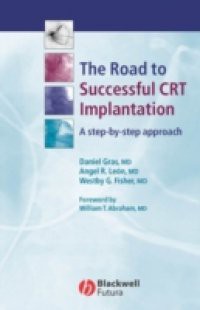Cardiac resynchronization therapy is a new therapy for advanced heart failure patients. This therapy has been shown to improve quality of life, exercise capacity, NYHA classification, and even reverse the detrimental "reverse remodeling" that occurs in advanced heart failure - in patients already receiving optimal pharmacological therapy. The typical patient has NYHA III/IV HF symptoms, a QRS > 120 ms, LVEDD > 55 mm, without any indication required for pacing. The therapy is available in an ICD device, too. CRT has been shown to be effective in patients with both ischemic and non-ischemic cardiomyopathy.
The implant procedure is part of a learning curve. Many physicians who already perform electrophysiology procedures, or PPM, or ICD implants are the ideal implanter - but are surprised at the challenges this implant presents. This book will help "flatten" the learning curve for new physician implanting, and will provide a "guide' for those who have already started implanting. The success rate is about 90% - so after 10 years of application, we have found that there are still patients who do not get access to this great therapy because of the complexity of the patient's anatomy, or physician skills. The book is written by three authors with a great deal of experience culminating in over 3000 cases between them. This book is intended for cardiologists who currently implant either or both pacemakers and cardioverter defibrillators with cardiac resynchronization therapy (also called bi-ventricular pacing), or plan to implant in the future. This book will be extremely useful for the new cardiologist in training who is learning to implant devices.

